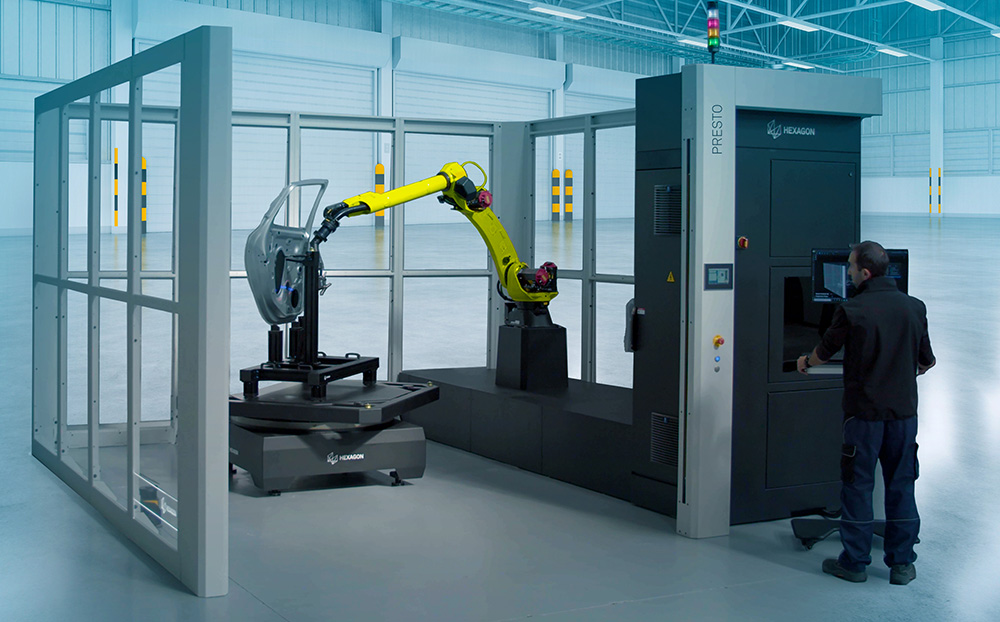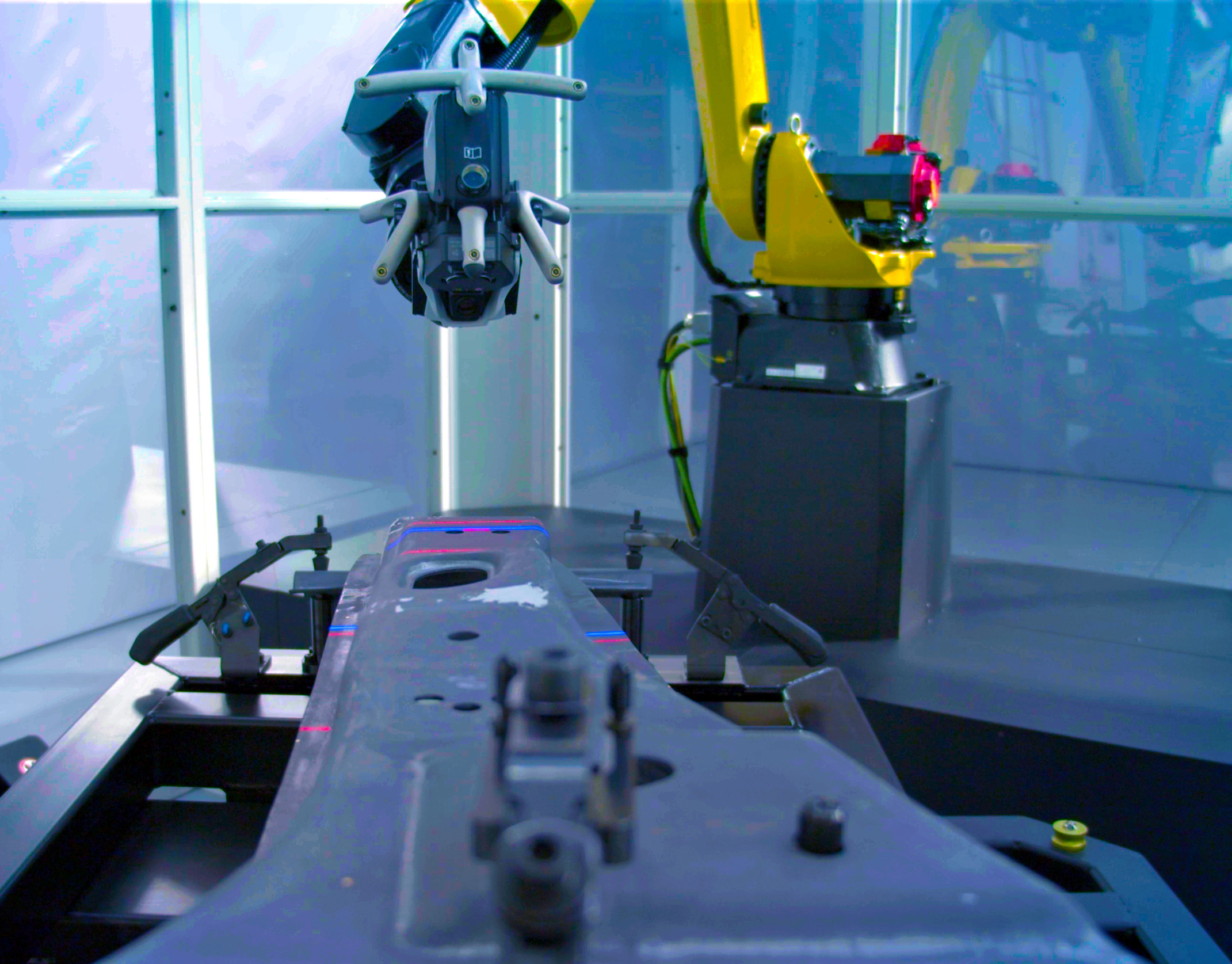The aerospace industry is constantly innovating and pushing the limits of what’s possible. This puts a lot of pressure on manufacturers to ensure their airplanes are top-notch in quality, safety, and efficiency. To meet these demands, the industry is undergoing a significant transformation, adopting cutting-edge technologies and pioneering new approaches to quality control and inspection.
Quality control and inspection play a critical role in the aerospace manufacturing process, ensuring that every component meets the most stringent safety and performance standards. However, traditional inspection methods can be time-consuming, labor-intensive, and prone to human error. To overcome these challenges and keep pace with the evolving needs of the aerospace sector, manufacturers are turning to advanced metrology solutions and innovative manufacturing approaches.
Here, we’ll explore the most pressing challenges facing today’s aerospace manufacturers in quality control and inspection. Then, we’ll discuss the groundbreaking technologies and forward-thinking strategies revolutionizing these processes, enabling manufacturers to achieve unprecedented precision, efficiency, and reliability.
Automation and noncontact measurement technologies
One of the primary challenges aerospace manufacturers face is reducing inspection time while maintaining the highest accuracy and precision levels. Traditional contact-based measurement methods are time-consuming and might not always provide the required detail for complex aerospace components.
To address this, manufacturing leaders are adopting noncontact measurement technologies such as laser line and laser scanning combined with automation. These technologies facilitate faster, more accurate data capture that allows manufacturers to inspect parts more efficiently and identify potential issues early in production.
For example, at Hexagon we’ve developed the PRESTO automated metrology cell, which integrates robots with automatic tool-path generation capabilities. This innovative solution allows manufacturers to efficiently measure parts in a high-mix, low-volume production environment typical of the aerospace industry. By automating inspections, PRESTO reduces the need for manual checks, minimizing human error and guaranteeing a consistently high-quality finished product.
|
|
To further streamline the inspection process, some manufacturers are leveraging the power of virtual environments, including robotic automation software. This software allows manufacturers to generate robot tool paths and simulate metrology processes before the physical part moves to the shop floor. By virtually programming and simulating the inspection process, manufacturers can optimize parameters, check for potential issues, and ensure a smoother transition to the actual measurement process. This approach reduces setup time, increases efficiency, and allows for more agile adaptation to changes in production requirements.
Artificial intelligence and data-driven optimization
The proliferation of data generated by modern metrology equipment has opened up new opportunities for leveraging artificial intelligence (AI) to enhance quality control processes. With advanced laser scanners capable of outputting millions of data points per second, the information available for analysis is immense. AI algorithms can filter and process these data efficiently, allowing manufacturers to extract meaningful insights and make data-driven decisions.
By learning from previous measurement runs, these intelligent systems can optimize data filtering and processing, reducing time by up to 50%. That translates to faster data processing, enabling manufacturers to pinpoint patterns and anomalies that could signal potential quality problems. The integration of AI in metrology allows for predictive quality control, where manufacturers can identify potential issues and address them before they escalate, minimizing scrap rates and reducing overall production costs.
In addition, AI-powered data analysis can provide valuable insights into process improvements and optimization opportunities. Manufacturers can gain a significant advantage by analyzing historical data and identifying trends. Doing so allows them to optimize process adjustments, predict tool wear, and proactively manage maintenance schedules, which minimizes downtime, improves product quality, and reduces costs. This data-driven approach means that aerospace manufacturers can continuously improve their processes, enhance product quality, and reduce waste.
Linking metrology to manufacturing operations
Another critical challenge to aerospace quality control is linking metrology to manufacturing operations. By establishing a solid connection between these two domains, manufacturers can facilitate faster root cause analysis and issue correction when they arise.
Metrology data play a crucial role in facilitating this link. By making inspection data available for the next steps in the manufacturing process—and allowing for supply chain investigation—aerospace manufacturers can create a more integrated, responsive quality control system.
This will enable them to more quickly identify the source of problems (whether in the design, materials, or manufacturing processes), ultimately leading to more efficient problem-solving and continuous improvement.
Digital twins and simulated environments
To help bridge the gap between real-world and simulated environments, digital twins—or virtual replicas of physical assets—are gaining traction in the aerospace industry. Digital twins let manufacturers create highly accurate virtual models of their production processes, machines, and parts, enabling them to simulate and optimize various aspects of the manufacturing process.
By leveraging measurement data from the shop floor, manufacturers can create digital twins that closely mirror the actual production environment. For example, Hexagon’s Nexus platform facilitates collaborative engineering in a shared 3D environment. Using real-world measurement data, Nexus enables engineers to simulate various manufacturing processes, including CNC machining, metal forming, and welding. By continuously updating these digital twins with data from metrology equipment, manufacturers can optimize their processes, predict potential issues, and make informed decisions in real time.
Using digital twins and simulated environments offers several benefits for aerospace manufacturers. First, it facilitates virtual testing and validation, allowing for earlier identification and rectification of issues in new designs and processes, ultimately saving time and resources by reducing reliance on physical prototypes. Second, it lets manufacturers identify potential problems and optimize processes before implementation, minimizing the risk of costly errors and rework. Finally, digital twins foster collaboration and knowledge sharing, empowering geographically dispersed teams to work together seamlessly and make data-driven decisions in real time.
Usability and integration: Keys to successful implementation
While advanced technologies and approaches offer significant benefits, their successful implementation relies heavily on the usability of metrology equipment and its integration with existing manufacturing systems. Even with the most expensive, sophisticated metrology solutions, aerospace manufacturers can see inefficiencies and wasted resources if operators lack proper training. To ensure the workforce can fully leverage its capabilities, manufacturers should invest in advanced metrology equipment that features a user-friendly interface, intuitive workflow, and comprehensive training programs.
At Hexagon, we’ve focused on developing user-friendly interfaces and preconfigured functions that simplify programming and operation. These features allow manufacturers to train their workforce quickly, allowing operators to adapt to new equipment easily. By providing intuitive software and hardware solutions, metrology providers can help aerospace manufacturers maximize the value of their investments and ensure a smooth transition to new technologies.
Equally important is the seamless integration of metrology solutions with the manufacturing ecosystem. Quality control data must flow seamlessly between metrology software, manufacturing execution systems (MES), and quality assurance platforms. By enabling real-time data exchange, this integration allows manufacturers to proactively identify and address quality issues, improving overall production efficiency. When connecting metrology equipment with the broader manufacturing landscape, aerospace companies can achieve a more holistic view of their processes, identifying opportunities for improvement.
Metrology solution providers like Hexagon play a critical role in facilitating this integration by developing open, flexible platforms that can interface with a wide range of manufacturing systems. By working closely with aerospace manufacturers to understand their unique requirements and existing infrastructure, metrology providers can develop customized solutions that seamlessly integrate with the existing ecosystem, creating a more streamlined, efficient quality control process.
Additionally, by integrating metrology data with the broader manufacturing ecosystem, aerospace manufacturers can become more predictive and reactive to the steps before and after their processes. These data will empower them to be more agile and responsive to fluctuations in supply and demand, ultimately enhancing their overall competitiveness.
Attracting and retaining skilled metrology professionals
Another significant challenge facing the aerospace industry is people—attracting and retaining skilled metrology professionals. The need for experts who can operate and maintain these sophisticated systems is growing ever stronger as the industry continues to adopt advanced technologies.
To address this challenge, we must make metrology more appealing to the next generation of young professionals. We can achieve this by emphasizing the technology’s cutting-edge nature, continuous learning and growth opportunities, and the critical role that metrology plays in ensuring aircraft safety and performance.
Additionally, investing in comprehensive training programs and ongoing support can help manufacturers build and maintain a skilled metrology workforce. When aerospace companies create an environment that fosters collaboration, innovation, and professional development, they can attract and retain the talent necessary to drive their quality control processes forward.
Shaping the future of aerospace quality control
The aerospace industry is undergoing significant changes in quality control and inspection, driven by advancements in metrology technologies and innovative manufacturing approaches. From automation and noncontact measurement to artificial intelligence and digital twins, these solutions empower manufacturers to enhance quality, improve efficiency, and reduce costs.
To successfully adopt these technologies, manufacturers must take a holistic approach encompassing technical aspects, human factors, and organizational considerations. Metrology solution providers like Hexagon can support this transition by developing user-friendly, integrated solutions for the manufacturing ecosystem.
As the aerospace industry continues to evolve, integrating advanced metrology technologies will be instrumental in producing safer, more efficient, and sustainable aircraft. By embracing these solutions, the aerospace community can ensure that quality, safety, and innovation remain at the fore of this critical sector.
منبع: https://www.qualitydigest.com/inside/metrology-article/aerospace-quality-control-innovative-technologies-enhanced-inspection

